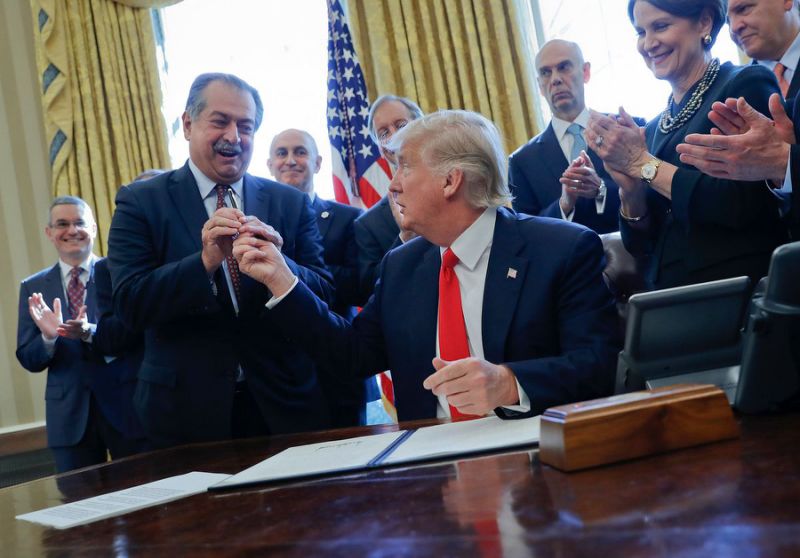The End of the Cost-Benefit State?
Legal Planet: Environmental Law and Policy 2017-03-12

Some scholars have proclaimed a vision of the regulatory state centering on cost-benefit analysis (CBA). They mean that quantitive comparisons of costs and benefits is now the foundation of regulatory decisions, arguably blessed by the Supreme Court in one of Scalia’s last opinions. Environmentalists weren’t convinced this was a good idea. Neither, as it turns out, is Donald Trump. He doesn’t seem likely to abandon CBA, but his executive orders definitely put in the back seat. They focus instead on other qualities of regulation that appear to (forgive the expression) trump cost-benefit analysis. The effect is to put regulations on the chopping block even if their benefits outweigh their costs.
As background, it’s important to realize that since 1981 all discretionary regulations have had to pass CBA. There are some non-discretionary regulations that are exempt — for instance, regular updates to air quality standards are mandated and don’t allow consideration of cost. But the great majority of current regs have passed CBA. Yet Trump says he wants to repeal great swathes of regulation.
Trump’s executive orders give short shrift to the benefit side of CBA. Trump’s initial executive order set up a regulatory budget and requires agencies to eliminate at least two regulations to balance the costs of a new regulation. Notably, regulatory benefits aren’t considered, only the costs.
Trump’s latest executive order further illustrates this dismissive attitude toward the balance of costs and benefits. The order issued on Friday establishes regulatory task forces in each agency and orders them to identify existing regs for elimination. Cost-benefit analysis gets a passing mention in the middle of the list. But the main focus is elsewhere, cutting regulations that might have positive net benefits or at worst break even. The order targets six categories of regulations for elimination, those that:
i) eliminate jobs, or inhibit job creation;
(ii) are outdated, unnecessary, or ineffective;
(iii) impose costs that exceed benefits;
(iv) create a serious inconsistency or otherwise interfere with regulatory reform initiatives and policies;
(v) are inconsistent with the requirements of [the Data Quality Act]; or
(vi) derive from or implement Executive Orders or other Presidential directives that have been subsequently rescinded or substantially modified.
The key point is that only one of the six categories involves cost-benefit analysis, and it’s not even at the top of the list. If Trump cared about whether the benefits of regulations exceed their costs, that’s the only one he would need. The others all target regulations regardless of whether they produce greater benefits than costs. For instance, a regulation that costs jobs is targeted even if the public health benefits outweigh the economic impact.
The executive order also says agencies should prioritize elimination of outdated regulations, which isn’t necessarily the same thing as prioritizing regulations whose costs exceed their benefits. (It’s interesting that eliminating obsolete rules takes higher priority than saving jobs — so much for populism.) Regulations that fail CBA may have tangible benefits that are dwarfed by costs. They may be new or old. In contrast, outmoded rules may have only small costs to go with their small benefits. The key point is that Trump’s priority isn’t where CBA says it should be, which is in eliminating regulations that fail to produce net benefits for society as a whole. That seems to be a lower priority than tidying up the Code of Federal Regulations by cutting decrepit regulations.
In short, cost-benefit analysis doesn’t playing a starring role in Trump World and barely seems to be on stage at all. Economists can’t be happy about this. Neither can legal scholars who advocate the cost-benefit state. Environmentalists, of course, have their own reasons to bemoan about Trump’s continued blindness to regulatory benefits. Not that Trump cares much about the views of any of those groups.